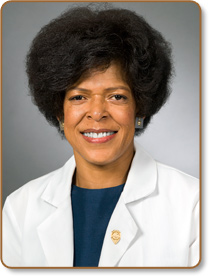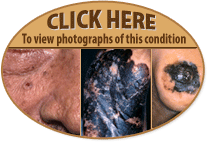Introduction
 The world has a greater percentage and number of deeply pigmented people however, individuals with skin types IV, V and VI are not generally considered in skin cancer discussions due to the lower occurrence of melanoma, basal and squamous cell carcinoma. This tendency is explained in part by their relative increase in mature photo protective skin pigment cells. Preventative healthcare suggestions include annual skin cancer screening and sun protection for fair skinned persons.
The world has a greater percentage and number of deeply pigmented people however, individuals with skin types IV, V and VI are not generally considered in skin cancer discussions due to the lower occurrence of melanoma, basal and squamous cell carcinoma. This tendency is explained in part by their relative increase in mature photo protective skin pigment cells. Preventative healthcare suggestions include annual skin cancer screening and sun protection for fair skinned persons.
A US workplace study comparing Caucasians, American Blacks and Hispanics revealed that Caucasians performed self-examination regularly. Blacks are less worried about skin cancer and Blacks and Hispanics were less likely to use preventative measures or seek immediate follow-up when diagnosed with skin cancer.
Melanoma
| Incidence Rate | Death Rate | |
| Caucasians | 20 | 3.1 |
| Hispanic | 4.4 | .8 |
| Asians | 1.3 | .5 |
| Blacks | 1 | .5 |
| Native Americans/Alaskans | .9 |
 Although melanoma occurs less frequently in Non-Caucasians; 5-year survival rates for Caucasians approximate 80 to 90%, compared to 60 to 70% for American Blacks.
Although melanoma occurs less frequently in Non-Caucasians; 5-year survival rates for Caucasians approximate 80 to 90%, compared to 60 to 70% for American Blacks.
Melanoma skin cancer in Non-Caucasians occurs more frequently in non-sun-exposed skin such as mucosal surfaces, palms and soles of the foot. This trend is common in Hispanics, Native Americans/Alaskans, Asians, Africans and South African Coloreds, and Sephardic Jews. These tumors tend to be thicker, more aggressive, invasive and at a later stage when diagnosed resulting in poor prognoses.
Non-melanoma skin cancer
Squamous cell carcinoma the most common localized skin cancer in American Blacks, appears as a red scaly patch, more often in non-sun exposed skin especially the lower extremities in sites of previous disease such as lupus, burns or ulcers. These tumors can be invasive with mortality rates approaching 17% to 29%.
Seventy-five percent of basal cell carcinomas in American Blacks are pigmented most occur in the head and neck area. The incidence is greater in women than in men and lighter as compared to darker skinned Blacks. Predisposing conditions can include burn scars, ulcers and albinism.
Basal Cell Carcinoma
Basal cell carcinoma, the most common non-melanoma skin cancers in Hispanics is frequently pigmented. The incidence of basal and squamous carcinoma is 11 and 14 times lower than Caucasians living in the same area.
The incidence of non-melanoma skin cancer in Japanese living in Kauai, Hawaii approximates 30 per hundred thousand, which is greater than the rate in northern Japan and less than that of southern Japan. Squamous cell carcinoma exceeds basal cell in prevalence; both tumor types occur predominately on the head and neck.
Skin cancer occurs less frequently in more deeply pigmented people however; in the case of melanoma morbidity and mortality rates are much higher. Clinical investigational studies and physician and patient education efforts are currently being devised in to address this important problem.

